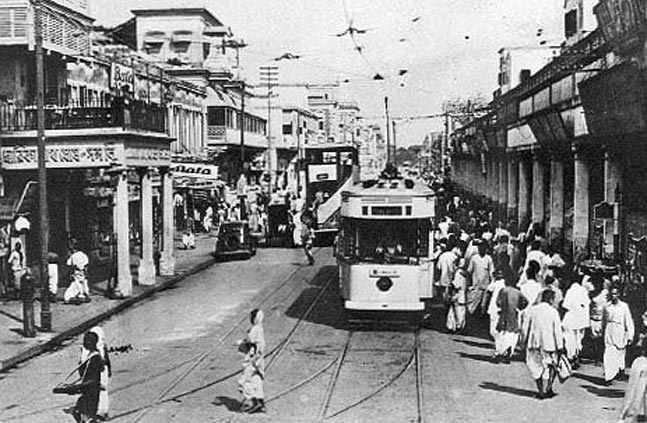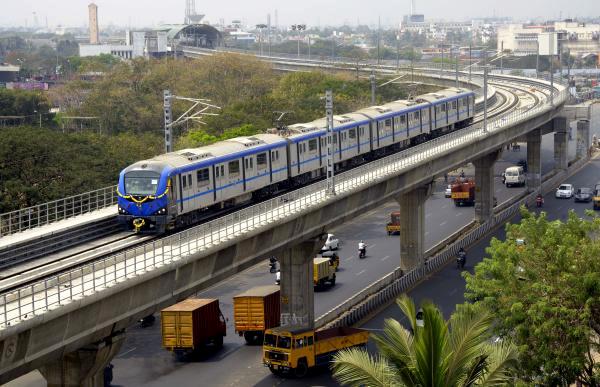Will Indian cities look at return of trams?
Between the struggle of keeping up with the growing faster transportation demands and metro promises to cities, can a revival of trams with its lost glory help Indian public transit system?
I

t was with the onset of trams that rapid transit system for public movement in Indian big cities could become possible. First, horse pulled trams and later electrified trams took over the roads which were a monopoly of the motorists and other vehicles. The first tram was introduced in Kolkata in 1880 and became electric in 1905. Following this, other major cities of India such as Mumbai, Delhi, Patna, Kanpur, Chennai and Nasik had tram services. Today, Kolkata still continues with tram with a fare of rupees 4 as standard fare for all stations.
Revival of Trams
The newly coined term for old tram system is Light Rail Transit System (LRTS) which is explored by the Housing and Urban Affairs Ministry to cover Tier-2 or 3 cities. Recently Ministry’s secretary, Durga Shankar Mishra, visited to look into newly operated Chennai Metro lines and stations. During the visit, according to the TNIE report, a meeting was held consisting all MD’s of Metro Services to look into possibilities of bringing back upgraded tram services. It was also revealed that MD of CMRL, P K Bansal went on a tour across a few EU countries to study LRT models.
What is the need for a new system as the metro is getting popular among the public? Before going into research the reasons we have to understand the history of local train transit systems and their current status. As we know the trains were introduced even before the first war of independence of 1857 from Bombay to Thane to facilitate faster movement of goods and other services. Putting the facility among the public for day-to-day use in bigger urban settlements like Chennai, Mumbai, Delhi and Kolkata was mooted during the earlier era of last century. EMUs which carry millions of people within the urban and its extensions were introduced later.
“In Mumbai, local train is the bloodline for its existence. Kolkata Metro was the first tube trains to be launched in India. Today, Delhi Metro, Chennai Metro has emerged as success stories. Chennai too had the pride of having Mass Rapid Transit System at elevated structures, which is still under considerable use. In fact Chennai has all three forms of train services that are elevated, surface and underground and aiming for another elevated service Mono Train in addition.”

Besides Chennai, another Municipal Corporation that seeks metro is Coimbatore. The CM who belongs to western of the state has already announced metro facility to the once called ‘Manchester of South India’ and necessary central clearance is awaited. Amidst the development the CMRL is mooting the idea of LRTS instead of metro. The prime reason for the sort of change is the cost incurred to build metro.
The upgraded trams go in-between a metro and bus service in addition with reduced cost and land acquisition issues. According to the experts, the cost for Metro per kilometer is around Rs 200-400 crore and at higher end for underground constructions, it is suitable for big cities and Tier-2 or 3 cities shall opt for LRTS. However, difficulty is in the form of designs where as there is no proven design for LRTS in India, which is under operation in more than 400 cities that include several emerging markets.
“Constructing separate lanes for LRTS are difficult since already the urban space is crunched. Alternatively construction shall be made at elevated structures as well. Cost-wise LRTS does not burden exchequer more while compared to metro. Former minister and current Vice-President, Venkaiah Naidu said once that LRTS costs 70% less than what Metro costs and it has to be encouraged. Hence they fit for Tier-II cities of the country.”
Another issue related to the mass transit system is how future traffic will be looked. Till present comprehensive Traffic and Transportation Study is made to map the mobility. But the ministry has mooted an idea to gather Comprehensive Mobility Plan from all metro facilitated cities to understand and design the corridors for the service. LRTS do attract ridership is the other, but important question. Public patronage is essential for any mass transit projects. Beyond all this is the deciding question for implementing LRTS in Tier-II cities.
Real alternative to mushrooming vehicle traffic?
The Minister for industries, Tamil Nadu has recently stated that the state has capacity to produce a two-wheeler in six seconds and a car in 20 seconds. This shows mushrooming vehicular traffic not only in the state, but also for the entire country. Along with vehicles, environmental depletion and accidents are also increasing every other day. Therefore, cost effective and Zero-emission technologies are essential to have sustainability. LRTS facilities are looked like a boon in this regard.
